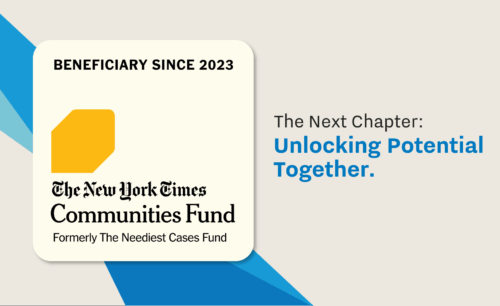
How Workforce Development Can Work Well for Jobseekers and Business
Plinio Ayala, President and CEO of Per Scholas, wrote “How Workforce Development Can Work Well for Jobseekers and Business” April 4, 2013. It was posted to the Huffington Post blog “What is Working: Small Business.”
Workforce development is all about connecting individuals who want good jobs with employers who want good workers. A well-designed workforce system can help small businesses find and retain a high-quality labor force, at very low cost. A poorly designed workforce system can be a costly distraction, to both small businesses and job-seekers.
As a longtime workforce practitioner, let me provide an example of how one small business was able to take advantage of the workforce system in New York City — and then suggest how that system could be re-designed to help many more small businesses create good quality jobs in this difficult economy:
When Jason Haibi from CS Technology in New York City proposed a company internship program using graduates of an IT Ready training program run by Per Scholas, he never dreamed of the impact it would have on his business. Jason wanted to expand his IT operations, but couldn’t afford the high salaries commanded by fully trained applicants. “By introducing a paid technical operations internship program, we were able to advance our corporate citizenship, while also growing our internal IT operations department from a group of three to five individuals,” Haibi said. “We achieved the additional headcount, consisting of truly skilled individuals, at nearly half the cost of traditional methods.”
The small business benefited because it connected to a workforce development program that tailors job training to fill well-paying, skilled roles that exist. The jobseekers benefited because they had average annual earnings of less than $8,000 prior to attending classes, but are now full-time employees and earning over $40,000 a year. A win-win scenario for all involved — and one that illustrates how workforce development can work well, especially for small businesses.
Elements of this story from one small business can be expanded to inform the redesign of New York City’s workforce development system. With unemployment hovering above 9 percent, the next mayor will need to deliver on the promise of job creation for all New Yorkers. Job creation is driven by both economic development (helping start new companies and expand existing businesses, both large and small), and workforce development (job training for workers as well as helping businesses access New York City’s talent pool). The city can play a central role in supporting both — creating good jobs across all five boroughs and helping businesses succeed.
The good news is that every year, foundations, unions, government agencies and nonprofits spend more than $400 million on workforce development programs in New York City. A number of programs directly help workers and businesses:
Worker-employer matching – connecting the right worker with the right employer
Employee support – helping workers keep jobs and be successful in them
Job training – teaching workers the skills they need for jobs in growth industries
Career development – providing new, on-the-job skills that benefit both workers and employers
Job redesign – rethinking how workers can become more efficient and productive
Despite these resources, businesses and job-seekers get lost in the bureaucratic shuffle, with dozens of agencies and organizations working at cross purposes. Improvements to accountability, inter-agency coordination and even data sharing are necessary changes that will benefit many more New York job-seekers and small businesses that turn to the workforce system when seeking employees.
Last year, I joined a diverse group of stakeholders with decades of experience in the city’s workforce system, supported by the New York City Workforce Funders. We strategized about how New York could do a better job of connecting individuals who want good jobs with employers who need skilled workers. Together, we developed Re-Envisioning the New York City Workforce System. Here are five of our recommendations:
1. Appoint a “job czar” reporting directly to the mayor. The job czar will oversee all workforce resources in the city, bring accountability to workforce programs and coordinate a unified system for job creation with economic development agencies and organizations.
2. Establish a network of nonprofit workforce partnerships responsible for coordinating funding streams and putting programs into practice.
3. Realign financing to reward long-term job outcomes, so that more workers stick with jobs once they are placed in them and learn the skills they need for jobs in growth industries.
4. Design a universal system of program assessment and information management, to eliminate redundancy and help programs make informed decisions about what works to create jobs that match business’s needs.
5. Create a formal Council of Workforce Advisers with foundations, businesses, unions and non-profits advising the mayor on creating a 21st-century training and employment system for the entire city.
Re-envisioning the New York City Workforce System is a blueprint for the next mayor to deliver on the promise of job creation and help businesses, small and large, succeed and expand. It is a call to action to build a workforce with skills that businesses can use today. The result — workforce development that works for jobseekers and employers — will create a stronger economy for the city and a better life for many New Yorkers.
Sign up for our Monthly Impact Report
More News

Donate Now
Your support makes a powerful difference in our ability to build a technology talent training solution that creates greater access and equity.

